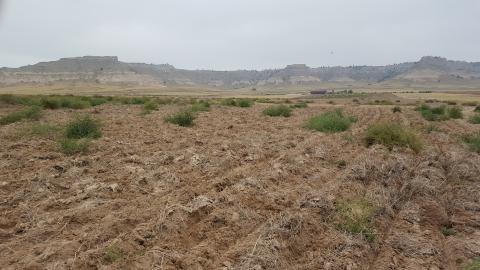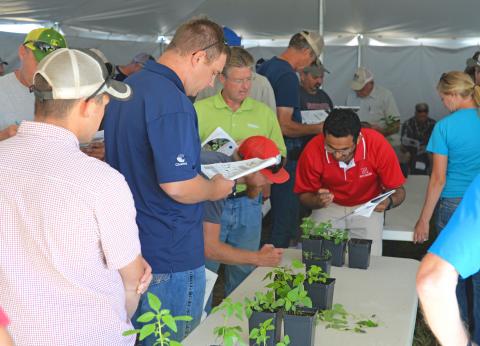Nebraska Extension Pest of the Month: Cheatgrass
October 17, 2016
The winter annual weed species cheatgrass is competitive with crops, desirable forage, and native plants and will reduce productivity of crop and range land. Learn how grazing, mowing, and properly timed herbicide application can be integrated to provide effective control.
Fall Management of Cool-Season Invaders in Pastures
October 12, 2016
When cheatgrass, bromes, and other cool-season plants invade native warm-season grass pastures and rangeland, they shift good grazing away from summer.
Thistle Control During October
September 21, 2016
It’s thistle time again. Even if they are hard to see, this is the time to control them.
Weed Control Options in Seedling Alfalfa
September 21, 2016
Late summer plantings of alfalfa tend to have fewer weeds than spring plantings, but this year, fall weeds may be a problem in some fields.
Controlling Winter Annual Bromes this Fall
September 14, 2016
Early to miid-September is a good time to start controlling winter annual bromes in your pasture.
Your Help Needed to Identify Palmer Amaranth Distribution in Nebraska
September 2, 2016
Nebraska Extension is requesting help in identifying the distribution of Palmer amaranth in Nebraska by taking this short survey.
Fall Weed Control Options for Winter Wheat
August 31, 2016
Weed management is a long-term battle that needs to continue even in tight margin years.Although herbicide costs may seem prohibitive, it’s important to consider the long-term implications of limiting or eliminating the use of herbicides in crop production systems.Weeds left unmanaged after wheat harvest use valuable nutrients and water needed for the following year’s crop while producing seeds to replenish the soil seed bank.
New Herbicides & Managing Multiple Herbicide-Tolerant Crops
July 28, 2016
In Nebraska, eight weed species (common ragweed, common waterhemp, giant ragweed, kochia, marestail, Palmer amaranth, redroot pigweed, and shattercane) have been confirmed resistant to at least one herbicide. Six of them — common ragweed, common waterhemp, giant ragweed, kochia, marestail, and Palmer amaranth — have been confirmed resistant to glyphosate in Nebraska. This article reviews information presented at the Weed Management Field Day at the UNL South Central Ag Lab, focusing on field demonstrations and methods to reduce the development of further herbicide resistance.



